


Shaping Civilizations From Clay
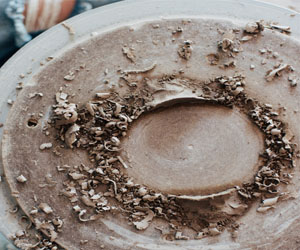
Pottery, one of the most ancient and enduring art forms known to humankind, has played a pivotal role in the development of human civilizations. The history of pottery traces back thousands of years and offers a fascinating glimpse into the evolution of societies, art, and technology.
The Earliest Beginnings: The roots of pottery can be found in the distant past, with the earliest pottery fragments dating back to around 20,000 BCE. These early ceramics were often rudimentary and primarily utilitarian, used for cooking, storing food, and transporting water. They were typically created through the process of handbuilding, involving the shaping of clay through pinching, coiling, and smoothing.
Neolithic Advancements: The Neolithic period (circa 10,000 to 2,000 BCE) marked a significant leap in the history of pottery. During this time, humans developed agriculture, leading to the need for more efficient food storage and preparation. This spurred the refinement of pottery techniques and the introduction of pottery wheels for shaping clay. Various cultures worldwide, from ancient China to Mesopotamia, independently discovered pottery and ceramic techniques that would continue to evolve over the millennia.
Egypt And Mesopotamia: Two of the world's earliest advanced civilizations, Egypt and Mesopotamia, played pivotal roles in the history of pottery. In ancient Egypt, pottery was not only used for practical purposes but also for religious and artistic expression. The Egyptians produced ornate and finely glazed ceramics, including funerary objects and sculptures.
In Mesopotamia, the cradle of civilization, clay tablets were employed for writing, while pottery was used to store and transport valuable commodities. The invention of the potter's wheel in this region revolutionized ceramic production and allowed for greater consistency and intricacy in design.
Greek And Roman Contributions: The Greeks elevated pottery to an art form. Their beautifully painted pottery, featuring intricate designs and intricate depictions of daily life and mythology, are now highly sought-after by collectors and historians. Greek pottery remains an enduring legacy of their artistic achievements.
The Romans continued the tradition of fine ceramic work, adopting Greek influences and creating their own distinctive styles. Roman pottery production was highly organized, and their ceramics were traded and exported throughout the vast Roman Empire.
The Far East: In China, pottery and porcelain have an ancient history that spans thousands of years. Chinese ceramics are celebrated for their craftsmanship, innovation, and exquisite glazes. The porcelain produced in China was highly prized along the Silk Road, leading to cultural exchanges between the East and West.
Medieval And Renaissance Europe: During the medieval and Renaissance periods in Europe, pottery production flourished. Monasteries and guilds played essential roles in preserving and advancing ceramic techniques. The development of kilns capable of higher firing temperatures led to the creation of stoneware and fine porcelain, which became symbols of wealth and prestige.
Modern Era: In the modern era, pottery has expanded its horizons beyond traditional vessels and functional items. The advent of the studio pottery movement in the 20th century, led by pioneering artists like Bernard Leach and Shoji Hamada, shifted the focus to individual artistic expression. Today, contemporary ceramic artists continue to push the boundaries of the medium, creating stunning and innovative pieces that reflect the ever-evolving world of art.
The history of pottery is a testament to the enduring appeal of working with clay and fire. From its humble beginnings in prehistoric times to its evolution as an art form, pottery has been an essential part of human history and culture. Its remarkable journey spans continents and millennia, leaving behind a legacy of craftsmanship and creativity that continues to captivate and inspire art enthusiasts worldwide.


Igniting Creativity And Ambiance In Your Home
 The Essence Of Homemade Candle Art
The Essence Of Homemade Candle Art
Homemade candle art represents the perfect fusion of science and artistry. Crafting a candle from scratch involves understanding the science of wax and wick, but it also encourages artistic expression in choosing colors, shapes, and fragrances. Whether you're a seasoned artisan or a beginner, this craft has something to offer everyone.
Materials And Techniques
Creating homemade candles can be a fulfilling experience. The key materials include wax, fragrance oils, wicks, and coloring agents. The type of wax you choose, like soy, beeswax, or paraffin, affects the candle's texture and burn time. Fragrance oils infuse your candles with enticing scents, from soothing lavender to invigorating citrus. Candle coloring agents provide endless possibilities for personalization.
Homemade candle making involves several techniques, including melting the wax, adding fragrance and color, and pouring the mixture into molds. The cooling and setting process requires patience, as the wax transforms into a solid form, ready to be ignited.
Industry Insights
 Terroir's Influence: Terroir, a French term referring to the unique combination of soil, climate, and geography in a particular region, plays a pivotal role in winemaking. Each wine region has its distinct terroir, shaping the character of the grapes and, consequently, the wine. The influence of terroir allows for a profound connection between the land and the wine, and it's an essential concept for understanding wine industry nuances.
Terroir's Influence: Terroir, a French term referring to the unique combination of soil, climate, and geography in a particular region, plays a pivotal role in winemaking. Each wine region has its distinct terroir, shaping the character of the grapes and, consequently, the wine. The influence of terroir allows for a profound connection between the land and the wine, and it's an essential concept for understanding wine industry nuances.
Sustainability And Organic Practices: In recent years, there has been a growing emphasis on sustainable and organic winemaking practices. Consumers are increasingly conscious of the environmental impact of their choices, and wineries are responding by adopting eco-friendly approaches. This shift towards sustainability reflects a broader commitment to preserving the natural balance and ensuring the longevity of wine production.
Wine Tourism: Wine tourism has blossomed into a thriving sector of the wine industry. People are not only enjoying wine but also seeking experiences that bring them closer to the heart of winemaking.
The Power Of Hands-On Expression
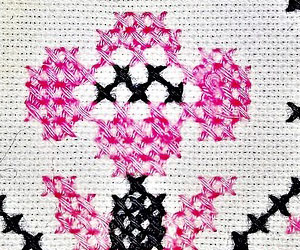 At its core, DIY creativity encourages self-expression. It allows individuals to break free from the constraints of pre-made products and to personalize their world. Whether you're sewing your own clothes, designing custom furniture, or creating unique artwork, DIY projects enable you to infuse your personality and style into every piece. This self-expression not only fosters a sense of ownership but also promotes a deeper connection to the things you make.
At its core, DIY creativity encourages self-expression. It allows individuals to break free from the constraints of pre-made products and to personalize their world. Whether you're sewing your own clothes, designing custom furniture, or creating unique artwork, DIY projects enable you to infuse your personality and style into every piece. This self-expression not only fosters a sense of ownership but also promotes a deeper connection to the things you make.
Engaging in DIY projects fosters a sense of accomplishment. There's an undeniable satisfaction in turning raw materials into a functional item or a work of art. Completing a DIY project instills a sense of pride and boosts self-esteem. It's a tangible reminder of your ability to create and innovate, which can be incredibly empowering.
Moreover, DIY creativity sparks problem-solving skills. Crafting your own solutions to challenges and hurdles in a project can be intellectually stimulating. It encourages critical thinking and resourcefulness as you seek to find the best way to achieve your vision. Whether it's figuring out how to fix a leaky faucet or designing a custom circuit board for a personal electronics project, DIY creativity demands a degree of innovation.
The DIY approach is cost-effective. Creating your own items or solving problems independently often saves money in the long run. Instead of purchasing expensive pre-made products or paying for professional services, DIY allows you to use your resources efficiently, relying on your skills and tools. It's a practical way to live sustainably while enjoying the process of creation.
DIY creativity also encourages a sense of community. Many individuals who engage in DIY projects find themselves participating in local crafting groups, makerspaces, or online forums where they can share ideas, gain inspiration, and collaborate with like-minded people. This sense of community fosters connections, friendships, and mentorships that enrich the overall experience of DIY creativity.
A Journey Towards Health And Well-Being
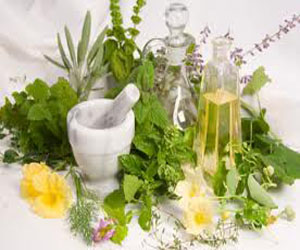 Safer Skincare: Personal care products, such as cosmetics and skincare items, are notorious for containing synthetic chemicals. Safer alternatives often come in the form of natural or organic products. These are made with ingredients sourced from nature, reducing the risk of skin irritation, allergies, or exposure to harmful substances.
Safer Skincare: Personal care products, such as cosmetics and skincare items, are notorious for containing synthetic chemicals. Safer alternatives often come in the form of natural or organic products. These are made with ingredients sourced from nature, reducing the risk of skin irritation, allergies, or exposure to harmful substances.
Chemical-Free Cleaning: Conventional household cleaning products often contain a mix of harsh chemicals, many of which can be harmful to both human health and the environment. Safer alternatives include natural cleaning products, such as vinegar, baking soda, and plant-based cleaners, which effectively clean without the toxic residue.
Nutrition And Food Choices: Safer alternatives extend to our diet. Organic produce, for instance, reduces exposure to pesticides and synthetic additives. Opting for whole foods over processed ones is another way to embrace a healthier approach to nutrition.
Reducing Plastic: Plastic pollution is a significant environmental issue, and it can also have adverse health effects due to the presence of microplastics in our food and water. Safer alternatives include using reusable containers and reducing plastic usage to minimize exposure.
Natural Medicine: Traditional and alternative medicine systems, like Ayurveda and Traditional Chinese Medicine, often provide safer alternatives to pharmaceutical drugs. These natural remedies focus on holistic healing and have fewer side effects.
Eco-Friendly Choices: Safer alternatives often align with eco-conscious choices. Reusable items, like cloth shopping bags and stainless steel straws, not only reduce waste but also limit exposure to potentially harmful chemicals found in disposable plastics.
Exploring Beer Ingredients
 Water may seem unassuming, but it is arguably the most critical ingredient in brewing. Its composition, mineral content, and purity greatly affect the final beer. Different regions with unique water sources contribute to distinct beer styles. For instance, the soft water of Pilsen, Czech Republic, played a pivotal role in the creation of the world-famous Pilsner lager.
Water may seem unassuming, but it is arguably the most critical ingredient in brewing. Its composition, mineral content, and purity greatly affect the final beer. Different regions with unique water sources contribute to distinct beer styles. For instance, the soft water of Pilsen, Czech Republic, played a pivotal role in the creation of the world-famous Pilsner lager.
Malt: The Heart Of The Brew
Malt, typically derived from barley but sometimes wheat, rye, or other grains, serves as the primary source of fermentable sugars in beer. It undergoes a malting process, which involves soaking, germinating, and drying the grain to convert the starches into fermentable sugars. The variety of malt used, the degree of roasting, and the kilning process determine the color, flavor, and body of the beer. Lightly roasted malts contribute to pale lagers, while deeply roasted malts produce rich, dark stouts and porters.
Hops: The Spice Of Beer
Hops are the flowers of the hop plant and provide the bitterness, aroma, and flavor to beer. The bitterness in beer balances the sweetness of the malt, while the aromatic and flavorful qualities create the beer's distinctive taste. The choice of hop variety and the timing of hop additions during brewing greatly influence the final product. Some beer styles, like the hoppy and aromatic India Pale Ale (IPA), showcase the extensive use of hops, while others, like Belgian ales, use hops more conservatively, emphasizing yeast character.

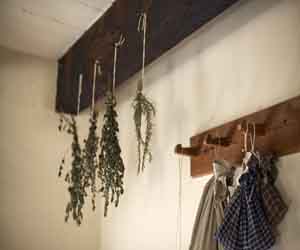


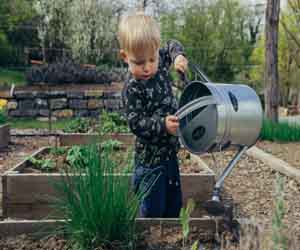
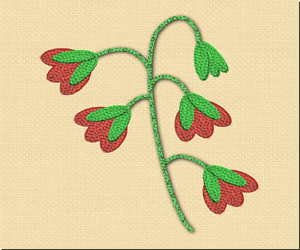
Crafting Your Inner World
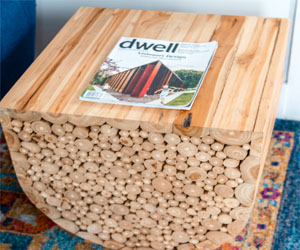 Creativity Unleashed: Woodworking provides a blank canvas on which you can paint your creativity. Whether you're crafting a meticulously designed piece of furniture, an ornate wooden sculpture, or a functional household item, every project is an opportunity for self-expression. The process of envisioning a project, selecting the wood, planning the design, and executing it involves making a series of artistic choices. These choices reflect your personal style, your interpretation of the world, and your emotions at the moment of creation.
Creativity Unleashed: Woodworking provides a blank canvas on which you can paint your creativity. Whether you're crafting a meticulously designed piece of furniture, an ornate wooden sculpture, or a functional household item, every project is an opportunity for self-expression. The process of envisioning a project, selecting the wood, planning the design, and executing it involves making a series of artistic choices. These choices reflect your personal style, your interpretation of the world, and your emotions at the moment of creation.
Emotional Release: For many woodworkers, the act of working with wood is a form of catharsis. The physicality of shaping and molding wood, combined with the rhythmic sounds of saws and the tactile feedback from the tools, can be a meditative and soothing experience. It's a way to release stress and express pent-up emotions. Some woodworkers even create pieces that embody their feelings, allowing them to externalize and share what might otherwise remain hidden.
Craftsmanship And Precision: Woodworking is an art that demands precision and craftsmanship. The attention to detail, the patience required, and the meticulous nature of the work all contribute to a sense of personal accomplishment. In each piece you create, you leave a piece of yourself—a testament to your dedication, skills, and the values you uphold.
Function Meets Form: Woodworking marries functionality with aesthetics. The objects you create serve practical purposes while also being beautiful. Your craftsmanship ensures that everyday items become works of art. The balance between utility and aesthetics allows you to infuse your creations with a sense of purpose and meaning.
Sharing Your Inner World: Woodworking also gives you the opportunity to share your inner world with others. When you gift a piece to a loved one or display your creations in your home, you're inviting people to experience a part of your soul. The stories, emotions, and passion that went into each piece can be conveyed to those who view or use your creations.